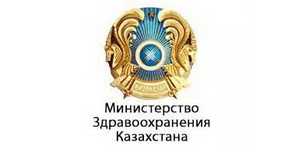Internal Quality Assurance System
-
Published: 07 March 2023
Aims and objectives:
ECAQA, as a quality assurance agency, manages the accreditation of higher education institutions and educational programmes, including medical and other healthcare professions education, to ensure that accredited higher education institutions, national research and clinical centres, higher nursing colleges, and clinical skills centres meet the predetermined ECAQA’s Standards for Accreditation, developed on the basis of the Standards and Guidelines for Quality Assurance in the European Higher Education Area (ESG) and WHO/WFME Global Standards, and ORPHEUS/WFME/AMSE Standards for PhD Programmes.
ECAQA reviews its internal quality assurance procedures and internal regulations, taking into account the requirements of the Government of Kazakhstan and the authorised bodies in higher education and healthcare.
ECAQA is responsive to national and institutional developments and needs in higher professional education.
In order to improve its external and internal quality assurance and comply with ENQA's requirements, ECAQA has developed and implemented the Quality Assurance Policy, the Internal Quality Assurance Framework, and the Quality Assurance Programme.
ECAQA regularly reviews the quality assurance system and procedures according to the following areas: Mission, Vision, Value, Strategy, Accountability to Stakeholders (Government, Society), Standards for Accreditation and Guidelines for self-evaluation of educational organisations/educational programmes and for external evaluation of higher education institutions, higher education and health professions education programmes (Bachelor, Master, PhD, Residency (postgraduate specialities training), CPD, Applied Bachelor and VET), independence of decision making, procedure for complaints and appeals, transparency and publication of reports including the data and findings, selection criteria for experts, their training and qualifications, appropriate governance arrangements, as well as sufficient resources allocation, international collaboration and partnership arrangements that are focused on continuous improvement.
The evaluation of internal quality assurance includes internal and external feedback received from educational organisations, members of the external expert commission of ECAQA, and students.
The Quality Assurance Policy is integrated into all ECAQA processes, and the staff and Expert Board have extensive knowledge of their responsibilities and duties as outlined in the Quality Assurance Programme.
References to this policy are provided in the relevant ECAQA Regulations, Guidelines, Procedures and other documents so that it is communicated to all staff and actively enforced.
ECAQA staff and experts participate in the implementation of the Quality Assurance Programme, which was developed by the Expert Board and approved by the Director General of ECAQA by Order no. 3 of February 14, 2017. The Programme was updated in 2022.
The implementation of the internal quality assurance mechanism is defined in the ECAQA Quality Assurance Programme.
All staff and members of the Expert Board are responsible for the awareness, implementation, and maintenance of the quality assurance system in accordance with their roles and responsibilities.
A system approach is employed to improve quality and performance using a cyclical model that includes the following elements: monitoring, evaluation, action, assessment, and feedback (feedback is an integral part of all parts of the cycle).
All employees, the Expert Board, and key stakeholders are provided with adequate resources, tools, and support to fully participate in the quality assurance and improvement system and processes.
ECAQA regularly collects information on its external quality assurance activities in order to identify progress, achievements, and areas for improvement. This information is obtained through a variety of mechanisms, including surveys, interviews, desk reviews, and observations.
The analysis of data gathered during monitoring allows for an assessment of the current situation and the identification of the best approach for improvement. Individual assessment activities and recommendations resulting from the external evaluation are communicated to the relevant staff through presentations at ECAQA meetings, group discussions, or other appropriate mechanisms to communicate the results and develop a coherent approach to subsequent improvement activities.
Priority actions for quality improvement are identified based on the analysis of the quality assurance system. If the activity requires financial resources, an adequate budget is determined prior to its commencement.
Similarly, if an activity necessitates the use of temporary human resources, discussions with the management team must take place before the activity begins.
Everyone involved in quality improvement measures is aware of the changes made to ECAQA's work.
Communication and feedback are essential at all stages for achieving long-term results and facilitating organisational change.

Documents supporting ECAQA's internal quality assurance system:
- ECAQA Quality Assurance Programme
- ECAQA Strategic Plan
- Standards for accreditation of educational organisations and educational programmes
- Guidelines for external evaluation of educational organisations and educational programmes
- WFME Recognition Programme of accrediting agencies for medical education (Policies and procedures for the recognition of agencies accrediting medical schools)
- ENQA Guidelines for Agency Reviews
- Regulations governing activities in education, healthcare and accreditation
- ECAQA internal documents governing quality assurance and accreditation activities
- Internal labour regulations
- Ethics supporting documents: ECAQA Employee Code of Conduct, Regulations on the ECAQA Accreditation Council, ECAQA Code of Conduct for External Review Experts
- ECAQA’s annual report to the competent education authority, including ECAQA activities, conclusions, and recommendations for improving the quality of education
- ECAQA's thematic analyses to assess the impact of internal and external quality assurance systems on institutional capacity building and quality culture development in educational institutions.








